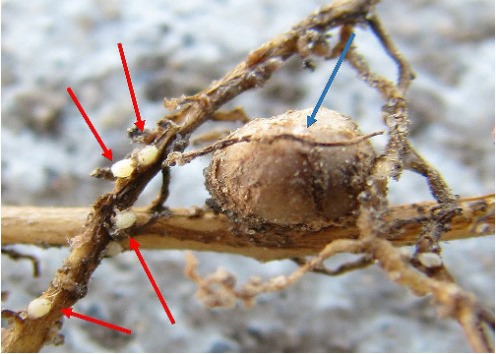By Kerstin Theilmann
RPTU University of Kaiserslautern-Landau has shown for the first time, in a joint study with BOKU University, that permaculture brings about a significant improvement in biodiversity, soil quality and carbon storage.
In view of the challenges of climate change and species extinction, this type of agriculture proved to be a real alternative to conventional cultivation—and reconcile environmental protection and high yields.
Permaculture uses natural cycles and ecosystems as blueprint. Food is produced in an agricultural ecosystem that is as self-regulating, natural and diverse as possible. For example, livestock farming is integrated into the cultivation of crops or the diversity of beneficial organisms is promoted in order to avoid the use of mineral fertilizers or pesticides.

In a study, published in the journal Communications Earth & Environment, researchers from RPTU and BOKU have now, for the first time, comprehensively investigated the effects of this planning and management concept on the environment.
"Although permaculture projects have been established all over the world since the 1970s, there has been surprisingly little accompanying scientific research," explains environmental scientist Julius Reiff from RPTU the background to the study. "We wanted to close this gap and investigate whether permaculture actually has the repeatedly-assumed positive effects on the agricultural ecosystem in practice."
Permaculture: Clear benefits for biodiversity and soil quality
The research team examined a total of nine farms in Germany and Luxembourg. The scientists examined various indicators of biodiversity and soil quality on the permaculture areas of these farms and on reference areas of the otherwise predominant agriculture nearby.
To this end, soil samples from the plots were analyzed in the laboratory for their organic carbon content, micro- and macronutrients and the activity of soil microorganisms. The biodiversity of earthworms, birds and plants was determined as a measure of biodiversity.
According to the study, the soil quality and biodiversity on the permaculture plots was distinctly higher compared to the surrounding conventional agricultural land as well as compared to the literature values for conventional agriculture.
The carbon and humus content of the permaculture soils was roughly comparable to the values in grassland in Germany. Grassland is considered an important reference, as it typically has the highest humus content of agricultural or forestry areas in Germany.
A high humus content in the soil is important for nutrient and water storage—a key factor in times of climate change, for example to withstand periods of drought. Although no mineral fertilizers were used on the permaculture areas, their soils had a higher soil nutrient content. This is also beneficial for human health. "The higher nutrient levels in the soil suggest that these are also higher in the crops produced," says Julius Reiff.
In addition to the soil quality, biodiversity also benefits: the researchers found three times more bird species on the permaculture areas than on the reference areas of the region's predominant agriculture. They also identified three times more earthworms and a higher biomass of soil microorganisms, which are essential for decomposition and nutrient conversion in the soil.
Compared to conventional agriculture, the researchers found three times the number of plant species on the permaculture areas. This is a good indicator of the overall biodiversity of an ecosystem and at the same time the food base for important species groups such as pollinators or the natural antagonists of pests.
A greater diversity of species is also created by the cultivation of mixed crops and usually also in combination with woody plants (agroforestry) in permaculture. This diversity of plants and structures is attractive to a wide variety of animal groups. The absence of pesticides is also beneficial for biodiversity.
According to the researchers, higher carbon stocks in the soil of permaculture areas can be explained on the one hand by a higher input of carbon-containing organic matter and on the other hand by the effect of mulching.
This is because permaculture areas are fertilized almost exclusively with manure or compost; reduced tillage and a layer of mulch prevent the top layer of soil from being eroded by heavy rainfall, for example. This means that the loss of carbon from the soil is lower in permaculture areas than in conventional cultivation.
The observed improvements could represent a real turnaround
The research team draws a promising overall conclusion. "Permaculture appears to be a much more ecologically sustainable alternative to industrial agriculture," said Julius Reiff . At the same time, the yields from permaculture are comparable to those of industrial agriculture, as the researchers' not yet published data shows.
"In view of the challenges of climate change and biodiversity loss, the observed improvements would represent a real turnaround when applied to larger areas," says ecosystem analysis expert Martin Entling from RPTU.
The phosphorus content that the team found in permaculture soils also gives cause for hope. "I hadn't expected such high amounts of phosphorus. Plants need phosphorus from the soil in order to grow. In intensive agriculture, phosphorus is abundantly applied and becoming a scarce commodity and a major challenge for agriculture worldwide. Another add-on for permaculture", said geoecologist Hermann Jungkunst from the RPTU.
Soil expert Johann Zaller from BOKU added, "I would not have expected permaculture to promote earthworms and other soil organisms to this extent. Given the importance of soil life for mitigating climate extremes and for the health and yield of crops, the results are very promising."
Click here to see more...